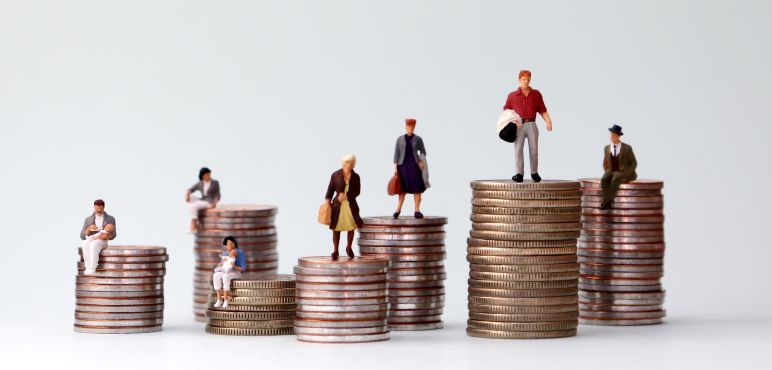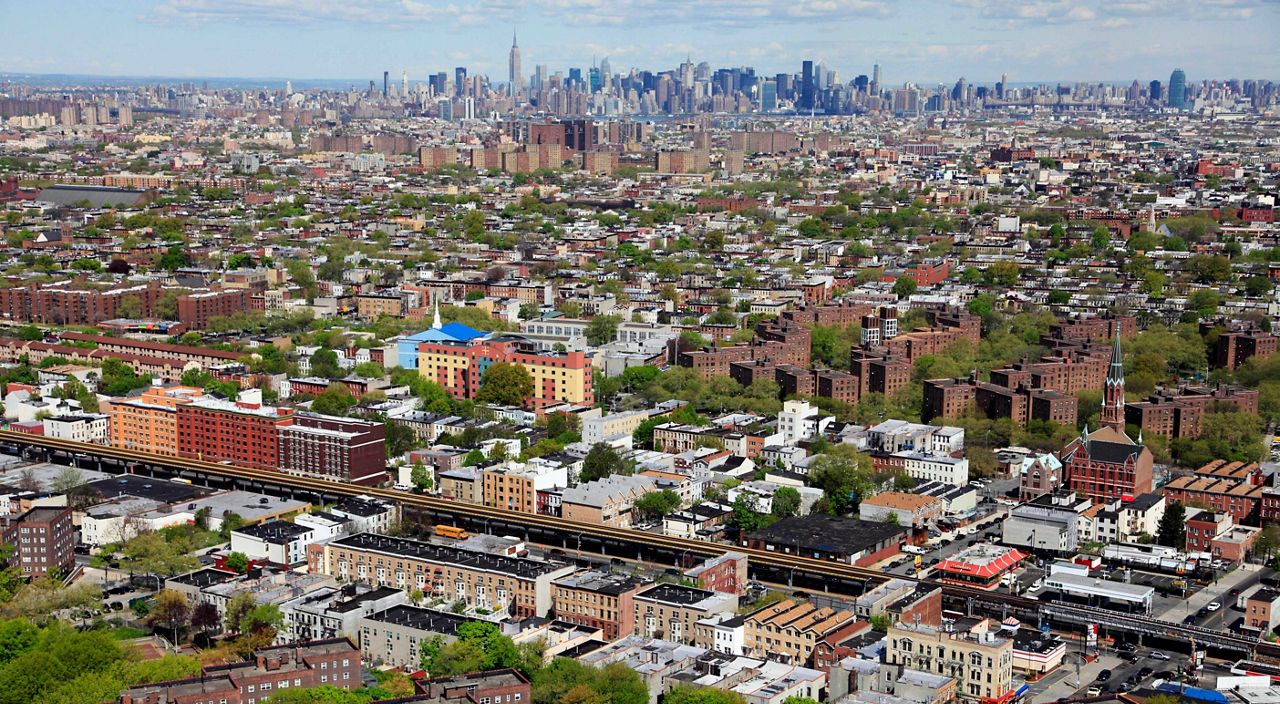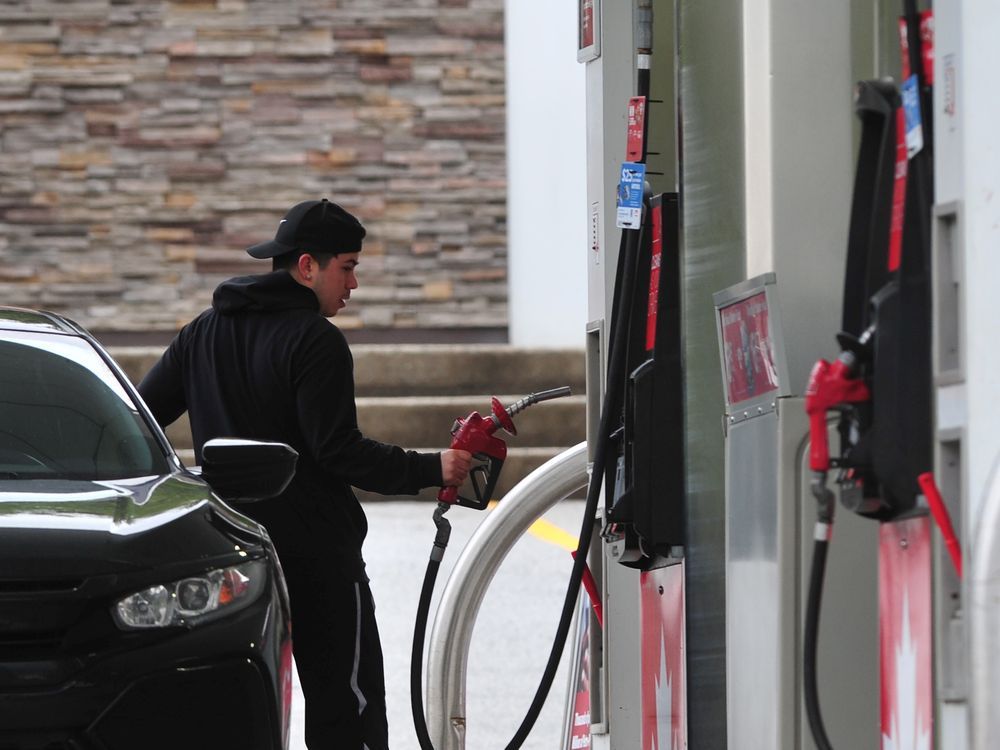Has the pandemic created more income inequality in California?

Recessions in California tend to widen the gap between rich and poor. The sharp pandemic recession of 2020 followed this pattern, with low-income workers suffering the most. But unprecedented government assistance has kept millions of people from falling into poverty, and demand for labor has driven up wages as businesses reopen.
Now that federal and state stimulus payments have disappeared and the recovery is still underway, researchers are sifting through employment statistics, as well as large-scale survey data, asking whether the pandemic has led to a deepening of the California divide. Three of the last four recessions — excluding the bursting of the internet stock market bubble — have increased income inequality in California, the Public Policy Institute of California has said.
In the coming months, the institute expects its own measure of inequality to be updated with 2020 data. Many Californians already see economic inequality as a facet of life here, with 69% of residents who believe the gap between haves and have-nots is widening, according to a November PPIC poll.
“The challenge is that surveys have struggled to sample low-income individuals and households during the pandemic,” wrote Sarah Bohn, a researcher studying the issue for PPIC, in an email. “So even if the survey data is available, we are doing extra work to validate income inequality statistics that we would typically have in hand now.”
“An even more exacerbated inequality”
There are other signs that the 2020 recession may have widened the economic divide, said Somjita Mitra, chief economist at the state finance ministry. The largest contributor to the state’s personal income in 2020 came from government transfers, or essentially stimulus payments. And the increase in incomes of high-income people was enough to offset the losses of low-income people.
“High-income earners are doing exceptionally well, which further exacerbates inequality in the state,” she said.
The answer to the inequality question may help shape Sacramento’s policymaking after a unique recession in which lockdowns led to huge job losses, economic stimulus checks bolstered paychecks for workers, capital gains taxes from soaring stock markets have filled state coffers, and the rise of remote work has reshaped both the state’s housing market and its economy.
As federal aid may expire, Governor Gavin Newsom said in January that he plans to use billions of dollars in unforeseen taxes to help struggling California families. Newsom said he had not ruled out measures such as state-funded stimulus checks like those given to low- and middle-income families last year. Fellow Democrats leading the Legislature are interested in another Golden State Stimulus, though they have their doubts about Newsom’s proposed gas tax “vacancy.” Newsom and lawmakers have already reinstated paid sick leave for COVID, though small business workers are excluded.
In his spending plan, the Democratic governor outlined several policies aimed at closing the economic divide, including universal health care that includes coverage for the state’s undocumented population, health care subsidies for class average, expanding paid family leave, establishing a tax credit for families with young children, free universal meals in schools, and more money to house the state’s homeless . Last year, the state also funded a guaranteed income program, with a pool of $35 million to support current or new pilot programs.
California has long struggled with poverty, exacerbated by some of the highest housing and gas costs in the country, although there is evidence that progress has been made during the pandemic thanks to government assistance. The state had the highest poverty rate at 15.4%, as measured by the Census Bureau’s Supplementary Measure of Poverty, which takes into account housing and transportation costs, as well as government and government spending. other factors.
Low-income jobs lost during the pandemic
From a jobs perspective, low-wage workers have borne the brunt of the pandemic recession, the shortest on record. And while low-wage workers are now in high demand, they still have the most ground to make up for.
Mitra of the state’s finance department said that before the pandemic, the bulk of the jobs created paid around $20,000 a year, or less, which required people to work more than one job or be underemployed. A study last year by United Ways of California estimated that 3.5 million California families did not earn enough to meet basic needs.
“We were already seeing a lot of inequality in this state,” she said. “When the pandemic hit, those jobs were the first to go.”
There are signs that the state’s low-wage industries are undergoing significant change. According to an analysis conducted last year by the California Policy Lab, a nonpartisan research center based at the University of California.
Low-wage workers in retail stores, hotels, restaurants, grocery stores and other customer-facing establishments have been hit hard by the pandemic. Meanwhile, the rise in home delivery has accelerated the rise of warehouse jobs, including at Amazon and other online retailers, in pockets of California’s Central Valley and Inland Empire. But there haven’t been enough of those jobs to offset the losses, said UCLA economics professor Till von Wachter.
“Some sectors have seen growth, such as transportation and warehousing, but they’re unlikely to have grown enough to absorb such a large share,” von Wachter said. “They’re also not as ubiquitous as some of these other sectors; if you’re in San Bernardino, it’s a really big industry, but not, say, anywhere else in LA County.
Inflation and housing hit the poor hardest
A spike in energy prices due to the Ukrainian crisis is expected to hurt the US economy. Sharp increases in inflation tend to hit the poorest residents the hardest, and there is initial evidence that this is happening in California.
About 2.6 million California households participated in the state’s CalFresh program, which provides food benefits to low-income individuals and families. This is roughly the same level as the last peak in June 2020.
“Even if people are working again, or if more people are working, the cost of food exceeds their incomes,” said Jacob Hibel, co-director of the Center for Poverty & Inequality Research at UC Davis. “Just having a job is not enough to ensure that you have enough food to feed your family.”
And with house prices skyrocketing last year, some people are now being pushed out of the traditional path to the middle class, who own a home, experts said. Housing affordability, measured by the number of Californians who could afford a median-priced single-family home, hit 23% in the second quarter of 2021, according to the California Association of Realtors. It was the lowest point since prices approached their peaks during the last bubble, in 2007, when 11% of Californians could own a home. This measure had increased slightly, to 25%, at the end of last year, according to the association.
High-income workers, homeowners and people who earn investment income have, overall, seen their wealth increase over the past nearly two years, experts noted, likely increasing wealth inequality in California. . Researchers noted in interviews that the pandemic may have increased inequality in other key ways. Disadvantaged children, for example, fell further behind in school, widening the achievement gap.
“When you see those kinds of impacts, they can really lock in inequality,” said UC Davis’ Hibel. “It tends to take young people who are either in poverty – or who experience inequality – and make it much, much less likely that they will be able to break out of that social stratum when they reach the adulthood.”
Alejandro Lazo is a reporter at CalMatters. This article is part of the California Division project, a collaboration between newsrooms examining income inequality and economic survival in California.






